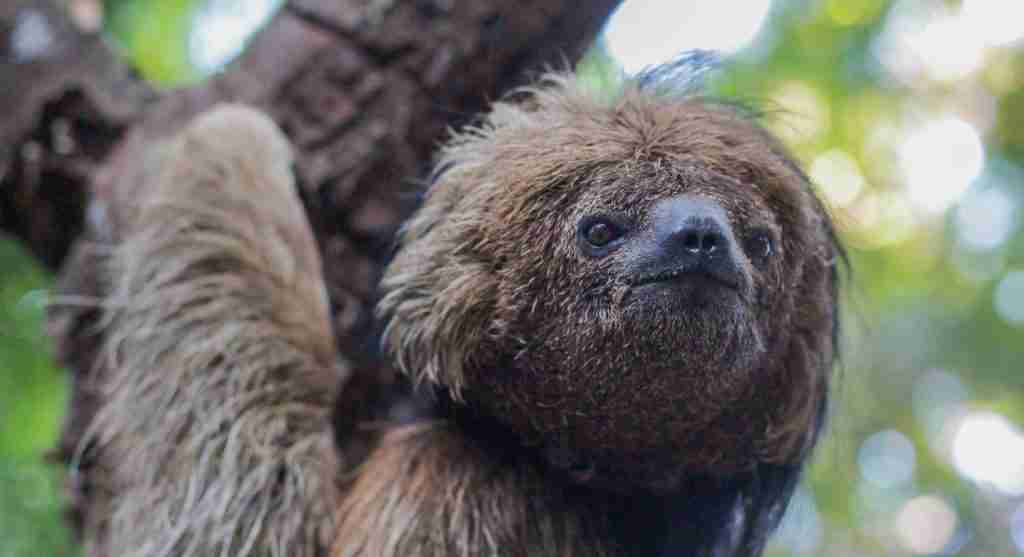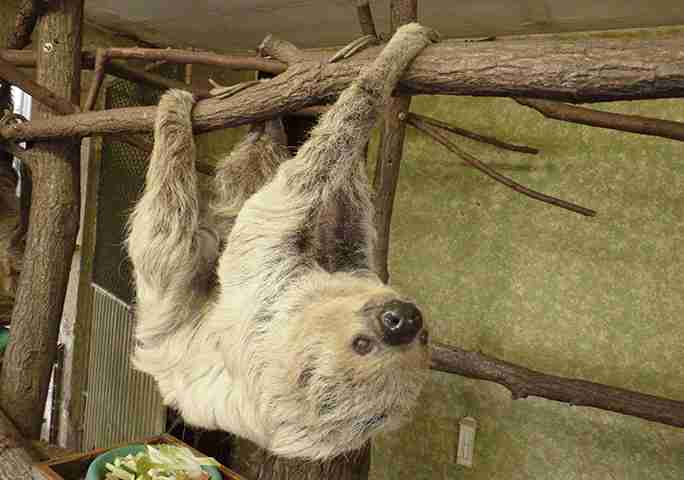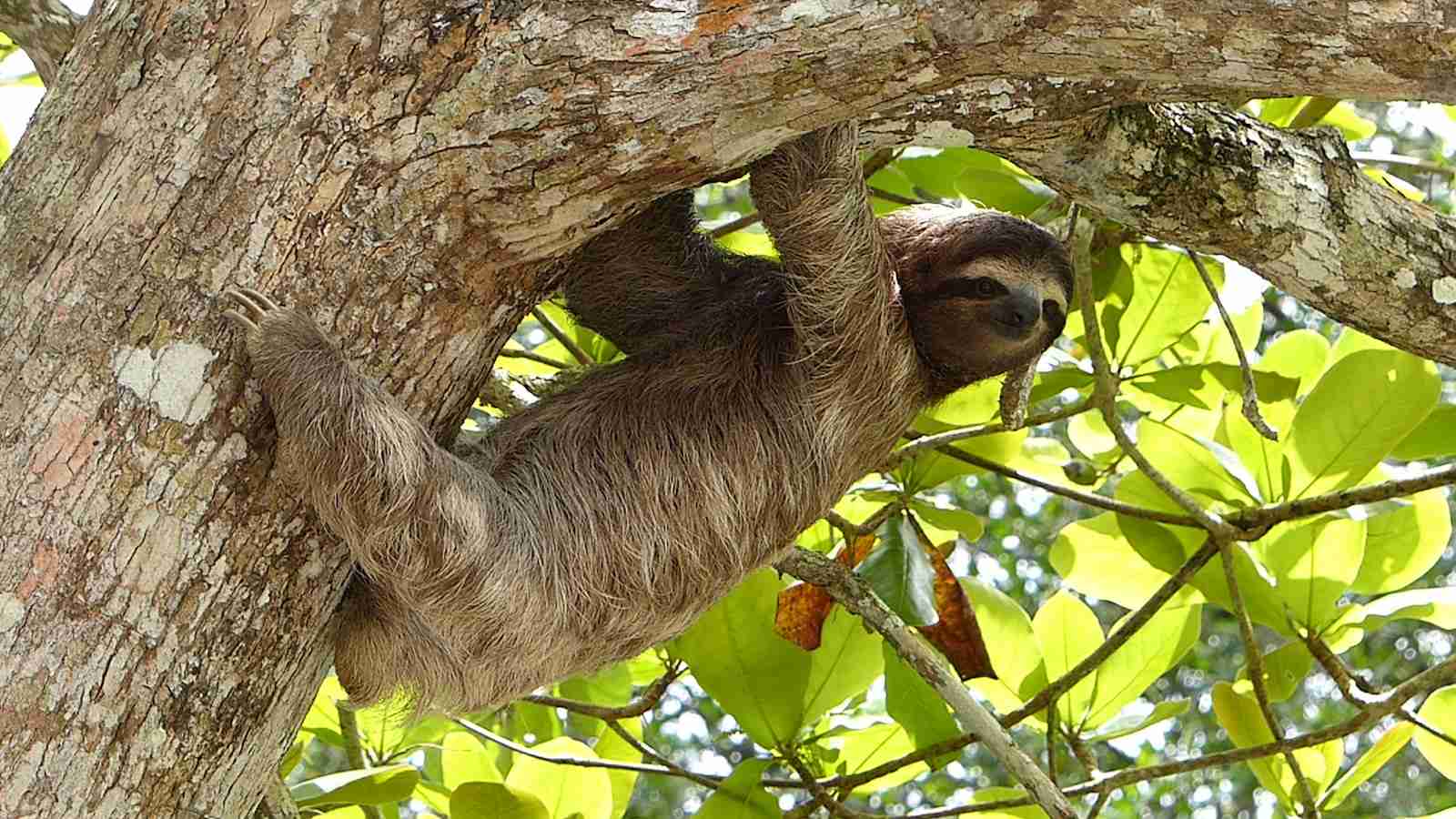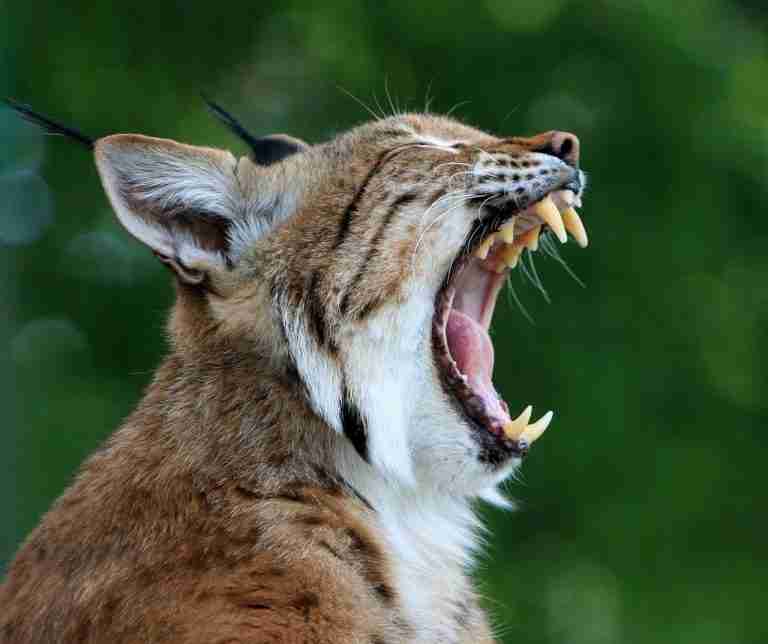22 Fun Facts About Sloths | Silent Hanging Charms
1. Sloths are 3 times stronger than humans.
Sloths, the pull-up champions, can lift their body with one arm from birth, despite having 30% less muscle mass than similar-sized mammals. Their unique muscles and special tendons allow them to be over three times stronger than humans.
They can hang upside down effortlessly, and even sleep while suspended, without using energy. This remarkable strength protects them from predators like jaguars.
2. Sloths can swim and are faster in water than on land.
Sloths are surprisingly adept swimmers, moving three times faster in water than on land. They can hold their breath for up to 40 minutes by slowing their heart rate significantly.
Enjoying a swim, sloths often drop from trees into rivers, showcasing their swimming skills. This aquatic agility contrasts sharply with their slow land movement, highlighting their unique adaptations.
3. Sloths spend 90% of their time motionless.
One of the most interesting facts about sloths is their preference for a still life, spending 90% of their time motionless. This isn’t due to constant sleeping, as they average around 9.6 hours of sleep a day.
Their stationary lifestyle, whether during the night or day, serves as a natural defense, keeping them hidden and safe from predators like jaguars and eagles.
4. Ancient sloths could be as large as elephants.
Ancient sloths, including Megatherium americanum and Darwin’s ground sloth, were titans of the Pleistocene epoch, rivaling modern Asian elephants in size.
Weighing up to 4.58 tons and stretching 6 meters long, these behemoths like Darwin’s ground sloth, which was slightly smaller but still impressive at two tons and three meters long.
5. Green algae grow on Sloth’s fur, helping them camouflage.
Sloths carry a unique ecosystem in their fur, fostering green algae, fungi, and moths in a symbiotic relationship. This partnership not only benefits their tiny inhabitants by offering a place to thrive but also enhances the sloths’ camouflage.
The green algae, blending with their light brown fur, allows them to meld into the leafy environments of their tree homes, providing an extra layer of protection from predators.
6. Sloths hang using their long claws without any muscle power.
Sloths utilize their long claws and tendons to hang from trees without using muscle power, a clever strategy to conserve energy. This energy-saving design aligns with their famously slow movement, optimizing their existence for minimal effort.
Their muscles are uniquely adapted for this ‘upside-down’ lifestyle, excelling in pulling and gripping but offering little in pushing strength.
7. A sloth was once mistaken for an alien in Panama.
In 2009, teens in Panama mistook a decomposing sloth for an alien, leading to widespread media buzz. Dubbed the ‘Panama Creature,’ the hairless, clawed being found near a creek was later identified by authorities as a brown-throated sloth.
Despite its strange appearance, a biopsy confirmed it was indeed a native sloth, dispelling rumors of extraterrestrial origins.
8. Sloths can turn their heads through 270°.

One of the cool facts about sloths is their ability to turn their heads through 270°, much like owls. Thanks to extra vertebrae, they can nearly scan their surroundings in a full circle, spotting danger from almost anywhere.
This feature is vital for sloths, who aren’t great at defense, to stay alert to approaching threats without moving much.
9. Sloths have a once-a-week toilet routine.
Another unique sloth fun fact is their weekly toilet routine, defecating just once a week on the forest floor, often in the same spot. Despite the seeming convenience of their tree-bound lives, sloths descend to maintain cleanliness.
This slow metabolism means they can hold off for days, and when they do go, they may lose up to a third of their body weight in one go.
10. How long do Sloths sleep?
Brown-throated sloths are known for their extensive sleeping habits, snoozing for up to 15 hours a day, whether in the wild or captivity. With a low body temperature between 86°F-93°F, they adeptly regulate it by moving in and out of shade.
Remarkably adaptable, sloths can sleep while hanging upside down or lying on their backs, embodying the epitome of relaxation.
11. Female sloths shriek to find a mate.
Another interesting sloth fact is about their unique mating call. Female sloths, particularly the three-fingered variety, emit high-pitched screams when ready to mate, drawing male sloths to them.
Unlike their vocal counterparts, two-fingered sloths rely on scent marking with their anal glands against tree branches to communicate their reproductive readiness.
12. Sloths’ hair grows in the opposite direction to most mammals.

Sloths stand out as the only mammals with hair that grows opposite to that of other mammals, a unique adaptation to their upside-down lifestyle. Their hair parts from the belly and grows upward towards the back, including facial hair pointing upwards.
This clever design aids in water runoff during rainstorms, keeping them dry and perfectly suited to their arboreal existence.
13. Sloths perform a Poop Dance.
One of the most quirky facts about sloths is their unique ‘poo dance.’ When it’s time to defecate, sloths descend to the ground, select a spot, and perform a distinctive sway from side to side as they dig a hole for their waste.
This peculiar dance, followed by burying their droppings, highlights their extraordinary and fascinating behaviors.
14. Sloths have been around since the Ice Age.
Sloths have a rich history dating back to the Ice Age, with species like the massive Harlan’s Ground Sloth and Megalonyx Jeffersonii, known as ‘Giant Claw,’ roaming the Americas.
These giant ground sloths, weighing up to 3,000 pounds and standing nearly ten feet tall, thrived until about 9,500 years ago. They shared the era with mammoths and giant beavers, eventually becoming extinct due to climate change and human hunting.
15. Sloths can grip trees even after death.
Sloths possess an extraordinary ability to maintain their grip on tree branches even after death, thanks to their uniquely curved claws. This remarkable trait allows them to remain suspended upside down, undisturbed in their arboreal resting places.
This ability is a testament to the sloth’s specialized adaptation for life in the trees, ensuring a lasting connection with their natural habitat beyond life.
16. Are Sloths blind?

Sloths have a condition called rod monochromacy, making them unique in their vision capabilities. This means they lack cone cells in their eyes, rendering them colorblind with very limited sight in dim light, and completely blind in bright daylight.
Despite this visual impairment, sloths compensate with an incredible sense of smell, which plays a crucial role in their navigation and survival.
17. Sloths don’t fart; they breathe out methane.
Sloths, unlike most mammals, don’t fart due to their extremely slow digestion, which could make gas buildup dangerous. Their leafy diet does produce methane, but it’s absorbed through the gut and exhaled, not released as flatulence.
This process is thanks to their slow digestive system and simple gut microbes, highlighting another unique aspect of sloth biology.
18. Sloths chat through clicks and hisses.
Sloths communicate using a limited vocal range, primarily through clicks, moans, and hisses, especially during mating season or when seeking partners. Despite their solitary nature, these sounds play a crucial role in their interaction.
Typically quiet and relying on camouflage for protection, sloths can become vocal, emitting low moans or hisses when distressed or threatened, using their physical defenses as a last resort.
19. Are Sloths dangerous to humans?
Sloths are not dangerous to humans if left undisturbed in their natural habitat. However, when threatened or agitated, they might defend themselves with their teeth or long nails, which can cause painful, easily infected bites.
They dislike being touched, and getting too close can provoke them to react defensively, potentially causing serious harm if they feel their space is invaded.
20. Jan, a two-toed sloth in captivity, is the oldest at 53.

Jan, a male Linne’s two-toed sloth (Choloepus didactylus) residing at Krefeld Zoo in Germany since April 30, 1986, has reached at least 53 years old as of July 25, 2023, and is the oldest sloth.
Born in the wild in South America, Jan was approximately six months old when discovered on May 1, 1970, making him one of the oldest known sloths in captivity.
21. Sloths can survive falls of 100 feet from trees.
Another interesting sloth fun fact is their remarkable resilience to falls. These creatures are anatomically built to survive tumbles from trees, frequently experiencing such falls, sometimes due to conflicts over mates or simply a branch breaking.
Amazingly, sloths can drop from heights of over 100 feet, equivalent to twelve double-decker buses stacked, without sustaining injuries, showcasing their extraordinary durability.
22. Sloths regulate their body temperature based on their environment.
Sloths are heterothermic, meaning they can adjust their body temperature to their environment, typically ranging between 25 and 35°C (77 and 95°F). Their temperature can fall to 20°C (68°F), making them torpid.
Sloths can warm up by basking in the sun or from heat generated during digestion, showcasing their unique ability to fluctuate between self-regulating and environmental temperature influences.
FAQs
Sloths can live up to 20 to 30 years in the wild, with their lifespan varying between species. In captivity, with proper care, they may live slightly longer due to a controlled environment.
Sloths primarily inhabit the rainforests of Central and South America. They spend most of their life in the trees, thriving in the dense, tropical forests where they can easily find food and hide from predators.
Sloths are herbivores, mainly eating leaves, twigs, and buds from trees. Their diet can include fruit and flowers, depending on availability. Their slow metabolism requires a diet low in calories and easy to digest.
Sloths poop on the ground to maintain their ecosystem, marking their territory and facilitating moth breeding in their fur, which helps fertilize the algae they feed on. This risky ground visit is a critical part of their life cycle.
Only 1,500 sloths are remaining in the wild, these unique creatures face significant threats from habitat destruction, poaching, and the pet trade. Conservation efforts are crucial to safeguard the remaining populations and their natural habitats.







